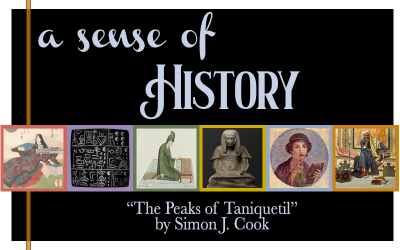
For the past several months, as a part of our column A Sense of History, Simon J. Cook has been analyzing the tower analogy in Tolkien's lecture-slash-essay "Beowulf: The Monsters and the Critics," including critical interpretations of the analogy. Although, on paper, most Tolkien fans know that Tolkien's professional work as a philologist and enthusiast of Northern medieval literature influenced his writings on Middle-earth, rarely do we see this emerge as clearly as in the latest installment in this series, where Simon traces the 1936 appearance of the Beowulf-tower (changed from a rock garden) to the appearance of towers looking West toward Númenor (added to earlier versions of the text). Simon draws a connection between the towers of Middle-earth and how the mysterious tower of Tolkien's "Monsters and the Critics" should be interpreted.